The ancient roots of Catwoman

Making her debut in 1940 as “The Cat” in DC Comics’ Batman #1, Catwoman has been, in her many guises over the past 80 years, either a super-villain or an anti-hero; Batman’s foil or his crime-fighting partner; his lover or his enemy. Originally modelled on 1930s sex symbols such as Jean Harlow, Catwoman was designed to be Batman’s alluring but baffling adversary – her sexual attractiveness closely intertwined with her mysterious ambivalence. As Bob Kane, the character’s co-creator (along with Bill Finger) wrote in his 1989 autobiography, Batman & Me, “We knew we needed a female nemesis to give the strip sex appeal,” adding, “cats are cool, detached, unreliable […] cats are hard to understand, they are erratic, as women are.”
More like this:
– The ancient origins of Wonder Woman
– Why cats are man’s best friend – on screen
– Is this TV’s most toxic stereotype?
And although Kane’s words come across as wince-inducingly sexist today, they are revealing about a certain perception of women as portrayed in the history of western popular culture. Arguably, no other animal has defined female sexuality in the western male gaze to the extent that cats have. Sexually provocative women are called “sex kittens”; women “purr” seductively, and are described as having “feline” good looks. In her own portrayal of Catwoman and her alter-ego Selina Kyle in The Batman, the actor Zoë Kravitz, who worked with director Matt Reeves to shape the character, described to Another magazine the challenges of modernising Catwoman, explaining that she wanted to avoid “fetishising or creating a stereotype” in her incarnation of the legendary but often diminished and hyper-sexualised figure.
The flipside to this “sexy cat” stereotype, is the desexualised trope of the “crazy” cat lady. Where Catwoman is kittenish, the cat lady is a spinster; a woman without a man, or shorthand for a lesbian. In her most common form, she is a sweater-wearing, bespectacled recluse who owns at least one cat, if not several. As Alice Maddicott, author of Cat Women: An Exploration of Feline Friendships and Lingering Superstitions, tells BBC Culture, the historic links between cats and women stretch far back in time, accompanied by a persistent dichotomy between the hypersexual and the unsexual. Chaucer’s Wife of Bath, for instance, was called a cat “in order to insult her and suggest she was promiscuous – she went out ‘a-caterwauling'”, Maddicott says. In other words, “being a ‘cat lady’ desexualises you, but that cat can also be used as an insult referring to promiscuity and lust.” (This isn’t that far-fetched; consider the contemporary term “cougar” used to describe women who date younger men.)
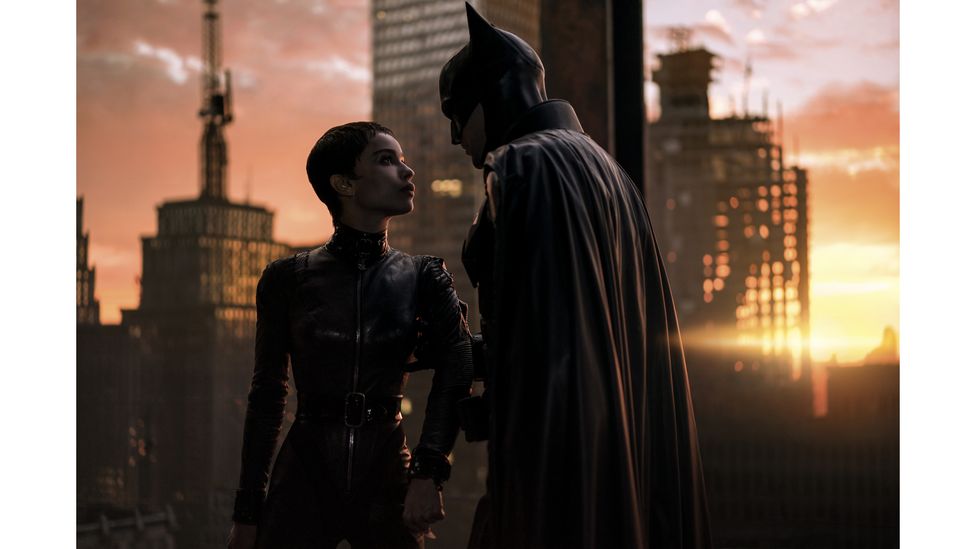
Zoë Kravitz has revealed that she wanted to avoid “fetishising or creating a stereotype” in her portrayal of Catwoman (Credit: Warner Bros)
The association between women and cats is both older and more widespread. In ancient Egypt, where cats were domesticated nearly 10,000 years ago, a half-cat, half-human goddess, Bastet, served as a goddess of domesticity, fertility and childbirth. She protected the home from evil spirits and diseases, and, as with most Egyptian deities, she also played a role in the afterlife as a guide and helper to the dead. In Greco-Roman times, interpretations of Bastet sprung up as Artemis (Greece) and Diana (Rome), with her link to cats still visible albeit to a lesser extent. They took human forms, with Artemis still closely linked to cats, and Diana transforming into a cat (specifically in Ovid’s Metamorphoses, when the Roman gods fled to Egypt). In Europe, perhaps the most prominent example exists in Norse mythology: Freyja, the goddess of fertility, love, and luck, rode on a chariot led by two male cats. In ancient China, pest control and fertility were assigned to the cat goddess, Li Shou. So, when did the association between women and cats – most notably in the West – become more negative, and controversial?
The cat-woman connection
The answer, it seems, lies in Christianity. “Effectively women and cats in unison were associated with pre-Christian goddesses,” Maddicott says, adding [which] “the church would have frowned upon and [could] be the root of some of the suspicion that later exploded with the witch trials.” (Witch trials were a series of hearings against people, primarily women, who were accused of practising witchcraft. Guilty convictions resulted in execution). In her book The Cat and the Human Imagination, Katharine M Rogers writes that in the Middle Ages, the Roman Catholic Church viewed free-roaming single women in the same light as female cats on the prowl. Later still, to eradicate Europe of non-Christian beliefs, all non-Christian deities were branded as evil, and cats were declared Satan’s minions. A slew of religious propaganda followed, describing either women, cats, or both, as evil.
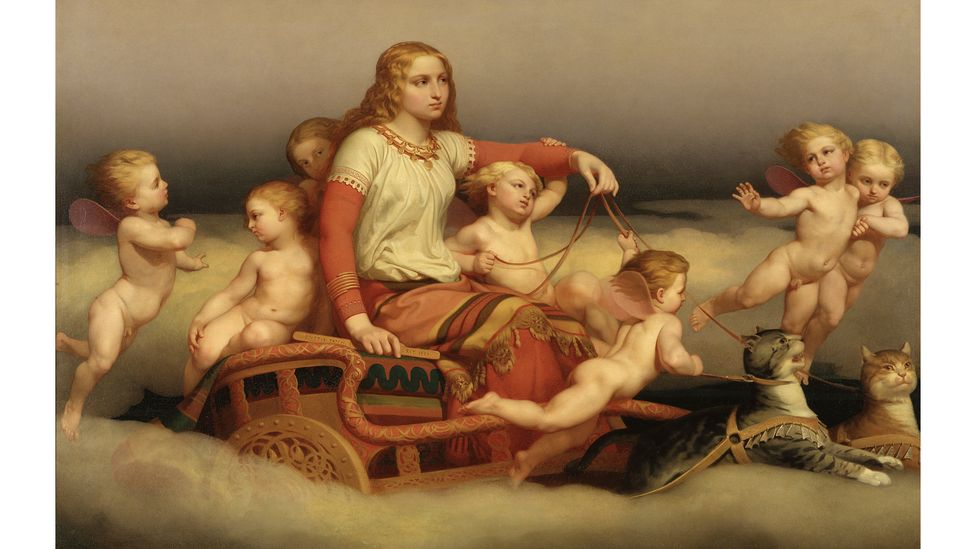
In Norse mythology, Freyja, the goddess of fertility, love, and luck, rode on a chariot led by two male cats (Credit: Fine Art Images/Heritage Images/Getty Images)
In 1233, Pope Gregory issued the Vox in Rama, a decretal that outlined Europe’s “problem” with non-Christian religions, accusing them of partaking in satanic cults, while describing these cults’ rituals in painstaking detail. According to Donald W Engels’ Classical Cats: The Rise and Fall of the Sacred Cat, this papal decree gave “divine sanction for the extermination of the cat, especially black ones, and the extermination of their female owners”. When Agnes Waterhouse was executed in England’s first witch trial in 1566, she confessed that her familiar (a supernatural spirit that served as a witch’s companion) was a cat named Sathan (Satan), who was later turned into a toad. The 63-year-old was hanged, forever forging the cat-woman-witch connection, as it made its way to the US, until the end of the Salem witch trials.
“[Cats] are independent and often intelligent – things that in the past if people were trying to control women they would not want them to be,” Maddicott says. In many ways, this upset the Christian hierarchical ordering of life on Earth, where the man was at the top. Katharine M Rogers further elaborates on this idea, writing: “Cats conveniently represent what men have long and bitterly complained of in women: they do not obey and they do not love enough. Men who cannot control women as they would like to associate them with animals that cannot be controlled.” It’s no wonder, then, that cats featured in US anti-suffrage cartoons in the early 20th Century in order to poke fun at and diminish the women’s movement.
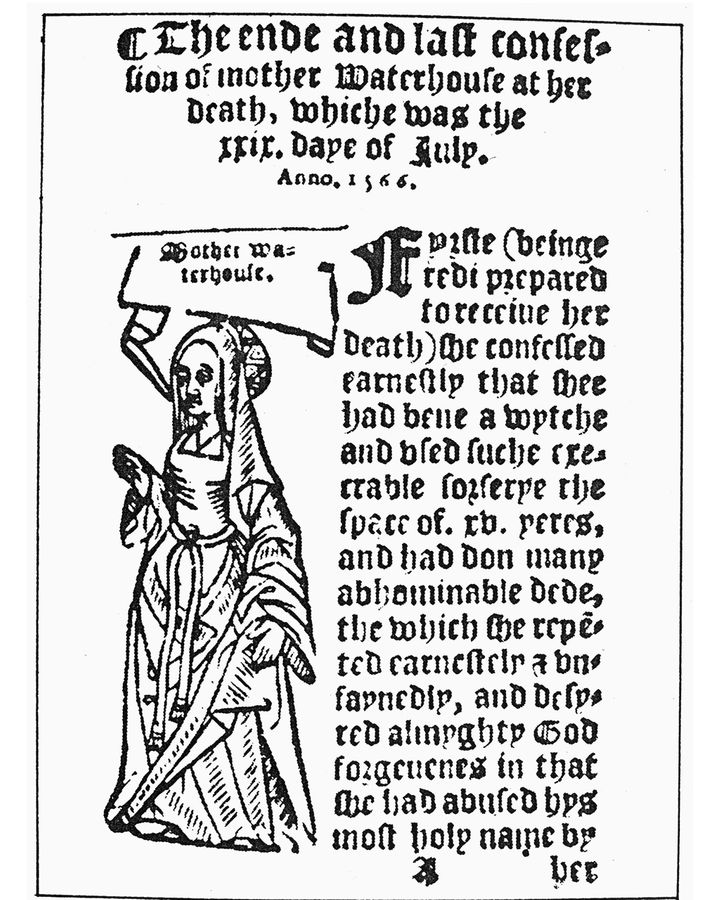
Agnes Waterhouse and her cat familiar, Sathan forever forged the woman-witch-cat connection (Credit: Alamy)
This association of cats and women forms part of a wider interaction between humans and animals, as Professor Fiona Probyn-Rapsey, a scholar at the University of Wollongong, who approaches Animal Studies from a feminist postcolonial perspective, tells BBC Culture. “The ideas that we have about animals feed into ideas about gender,” she says. “We routinely use animal tropes to talk about gender, and to police gendered behaviours (“bitch”, “hen-pecked”, “stud”, “cougar”) as well as [race and] racism, which is always making use of animal tropes to dehumanise and deny the humanity of others.”
Cat ladies in popular culture
Where single women were once dubbed spinsters and old maids, criticised for their drain on relatives’ finances, single women who owned cats were considered doubly doomed. By the Victorian era this link had entered the cultural milieu. In 1880, The Dundee Courier declared: “the old maid would not be typical of her class without the cat,” and that “one cannot exist without the other.”
This single-woman-plus-cat trope persisted well into the 20th Century, perhaps reaching its pop-cultural zenith in 1976, with the release of the documentary film, Grey Gardens. Its subjects were Edith Bouvier Beale “Little Edie” and her mother Edith Ewing Bouvier Beale “Big Edie” – both relatives of Jacqueline Kennedy Onassis, and Grey Gardens was the name of the 14-bedroom East Hampton, NY home they occupied together. Overrun with tens of cats, food tins and rubbish lined the house’s floors, its grounds infested with overgrown vegetation. The documentary was, in some ways, a cautionary tale of what becomes of a woman when she is without a man: Big Edie was divorced, and Little Edie never married.
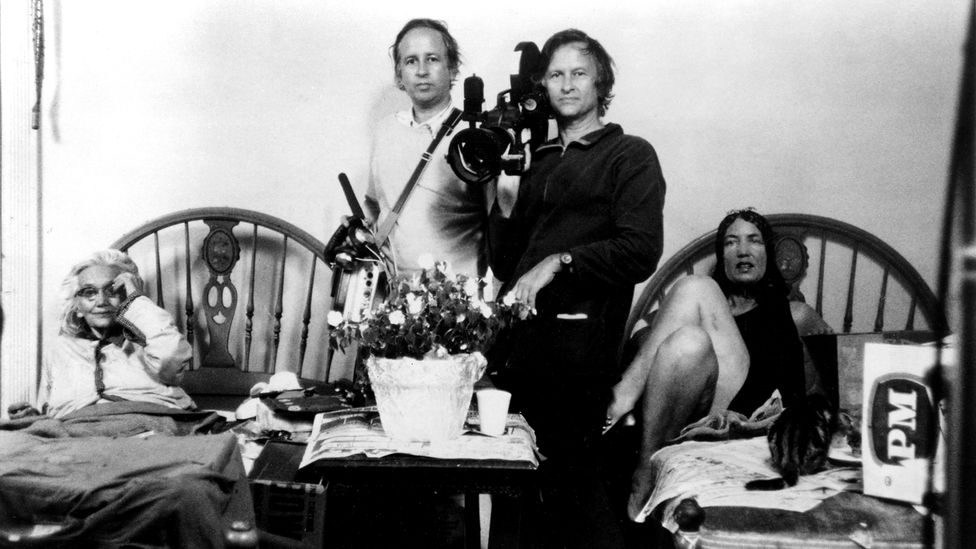
Little Edie and Big Edie – the subject of the 1976 Grey Gardens documentary – lived in a sprawling New York mansion with herds of cats (Credit: Alamy)
“The [cat lady stereotype] helps label women who are seen as unacceptable in terms of patriarchal societal expectations,” Maddicot says. “Cat ladies are often older, single and childless, and society tells women that this should be seen as a failure. If you do not go along with what is expected of you, then you could end up not only alone, but if you have cats, there is no way back and it must lead to the Grey Gardens extreme of squalor and desexualisation.”
Grey Gardens set the template for cat ladies on screen in the decades that followed. Both Michelle Pfeiffer and Halle Berry’s Catwoman roles featured cat ladies (in Batman Returns (1992) Pfeiffer was one; in Catwoman (2004) Berry is, in a sense, mentored by one); Mrs Deagle from Gremlins (1984); Eleanor Abernathy from The Simpsons (first appearance 1988); and Robert De Niro as a cat lady on SNL (2004). The LEGO Movie (2014) featured a cat lady, Mrs Scratchen-Post, owner of some 20 cats. Cat ladies have featured in literature, too: identical to their later on-screen representations: both in the book and film versions of The Clockwork Orange; Professor Pringle’s Aunt Jane in PG Wodehouse’s Jeeves and Wooster series, and Miss Caroline Percehouse in Agatha Christie’s The Sittaford Mystery.
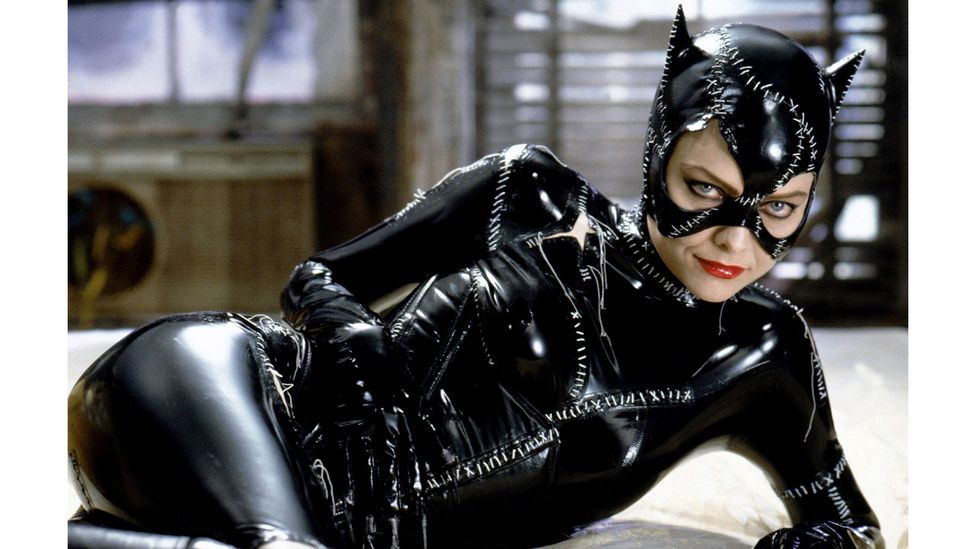
Grey Gardens set the template for cat ladies on screen, from Michelle Pfeiffer’s Selina Kyle to Robert De Niro’s appearance on SNL (Credit: Alamy)
More recently the fear – and cautionary tale – of cats and women that has pervaded popular culture now offers, to some extent, comic relief. In Gilmore Girls (2000-07), a newly single Lorelai calls her daughter Rory when first one cat, then two show up on her doorstep: “They know. The cats know… I’m alone. I guess I need to start collecting newspapers and magazines, find a blue bathrobe, lose my front teeth.” Similarly, in an episode of Crazy Ex-Girlfriend (2015-19), Rebecca jokes to her friends in a musical number about becoming a cat lady after she finds herself single. In other words, the cat lady trope is now, for the most part, a full-on cliché.
These well-worn hyper-sexualised “Catwoman” and desexualised “cat lady” stereotypes have a diminishing purchase today, however. Women have more liberty and power to exist outside the historical “norms”: more are choosing to be single, and to be child-free; they have greater authority in the workplace, and the use of the word “spinster”, which had fallen out of fashion, has recently been reclaimed by feminists. Even the term “cat lady” is now widely and proudly used by many cat owners – including celebrities such as Taylor Swift – on social media.
Does this reflect some sort of feminist reclaiming of the stereotype? Maddicott is sceptical. “It’s easier to make a term cool if you are in no danger of fitting the stereotype in society’s eyes,” she says, adding that the relationship between pets and their owners should be celebrated rather than mocked. “There are so many wonderful examples of women and cat friendships being what they actually are, a positive nice normal pet relationship, rather than the stereotype.” So, should a woman – or a person of any gender for that matter – choose to embrace being a “cat lady” or a “Catwoman”, then the choice to wear either label should be theirs and theirs alone.
The Batman is released in cinemas on 4 March in the UK and US
Love film and TV? Join BBC Culture Film and TV Club on Facebook, a community for cinephiles all over the world.
If you would like to comment on this story or anything else you have seen on BBC Culture, head over to our Facebook page or message us on Twitter.
And if you liked this story, sign up for the weekly bbc.com features newsletter, called The Essential List. A handpicked selection of stories from BBC Future, Culture, Worklife and Travel, delivered to your inbox every Friday.








